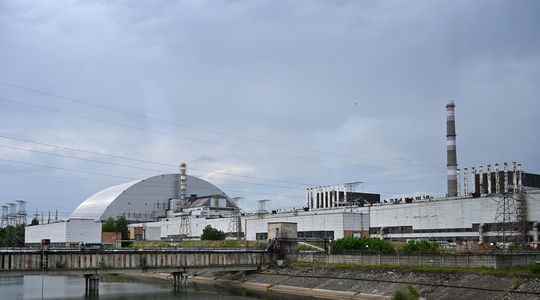After visiting the site of the Chernobyl nuclear power plant, the head of the International Atomic Agency, the IAEA, Rafael Grossi, declared on Tuesday April 26 that “the level of radioactivity was in the normal range”, although “some increases “had been observed during the Russian occupation. Vague remarks without scientific foundation for the Commission for Independent Research and Information on Radioactivity, CRIIRAD, which, through the voice of its laboratory director, Bruno Chareyron, believes that the IAEA must, before deciding, “map the site and assess the level of radioactivity zone by zone.”
L’Express: What was your reaction when the IAEA indicated that the level of radioactivity in the Chernobyl exclusion zone was “normal”?
Bruno Chareyron: We believe that this statement is too hasty and lacks seriousness. Barely returned from Ukraine, the director general of the IAEA seems to address conclusions when these can only be the result of an in-depth scientific investigation. It is necessary to carry out radioactivity checks inside and outside the premises and to find out what precise activities the Russian army carried out in the Chernobyl exclusion zone.
The IAEA tells us that the level of radioactivity has been measured in part of this area, but what about the others? Only a scientific study is able to provide us with reliable information, and to date there is none. Moreover, some data tend to contradict the reassuring words of the IAEA.
What data are you thinking of?
When the Russian army took control of the Chernobyl power plant on February 24, a sharp increase in radioactivity was recorded by 41 sensors. The IAEA reported, citing the Ukrainian regulator, a maximum observed level of 9.46 microsievert per hour, which is false since some sensors have recorded levels up to 500 times higher. And on February 25, the sensors stopped transmitting data. Why such an overnight increase? Why did the sensors suddenly stop?
The Russians are also known to have looted and destroyed the new Chernobyl Central Analytical Laboratory, where highly radioactive samples were stored. Are they kept elsewhere or have they escaped into the wild? The IAEA must answer many questions by endeavoring to carry out an information campaign and not a communication one. The first thing to do is to map the site and assess the level of radioactivity zone by zone.
What activities carried out by the occupier were likely to increase the level of radioactivity in the area?
By carrying out looting, the occupier certainly moved radioactive elements. If the latter have been taken out of the places where they were confined, they will cause an increase in the level of radioactivity in the air. In addition, the soldiers dug trenches, which may result in radioactive material coming to the surface. The soils are already irradiated, but if extremely dangerous elements come out, such as plutonium, it is necessary to know about it. It should also be borne in mind that the workers at the Chernobyl site were not replaced during the occupation of the site, yet their mission is very delicate. The IAEA must assess the exact consequences of the Russian presence on the level of radioactivity in the area.
Does the IAEA trivialize nuclear risk?
She is fully aware that war has an impact on nuclear security, she has moreover recalled this by expressing her concern on several occasions, but the way in which she communicates on the situation in Chernobyl questions us. . Such an important institution in such a sensitive area should only make a decision on the basis of precise scientific reports. CRIIRAD notes that this is not the first time that the IAEA has tried to reassure without having enough evidence to do so. We also noted this after the nuclear tests conducted by France in Algeria and Polynesia.
If it wants to be reassuring about the situation in Chernobyl, the IAEA seems worried about the nuclear power plant in Zaporijjia…
There is cause for concern, the plant suffered an attack on March 4, a fire broke out and missiles would have flown over the installations. If such machines were to touch the concrete structures storing radioactive waste, the dispersion of the latter in the environment would constitute a great danger. As no one has access to this plant, we do not know if the work necessary for its proper functioning has been carried out, if the reactors are cooled, if spare parts are not lacking… In the nuclear field, the Uncertainty is a source of concern, and this will last as long as no inspector can enter the area.
